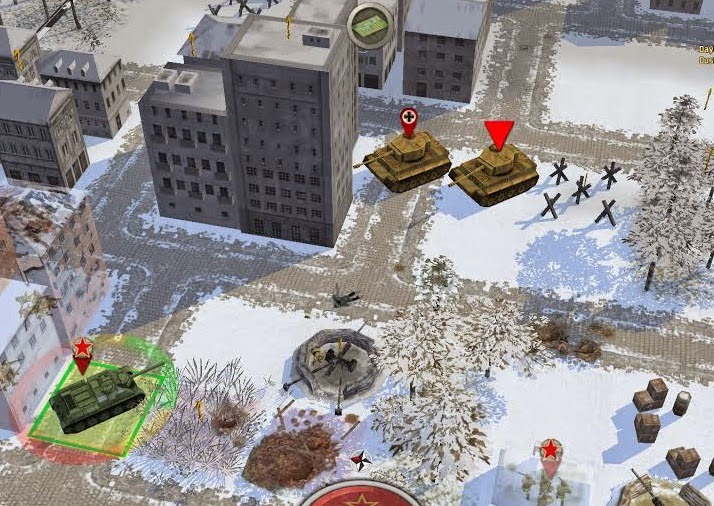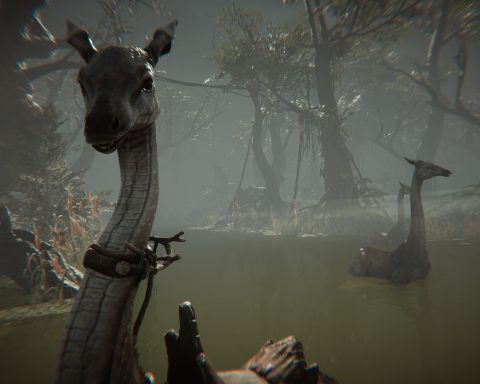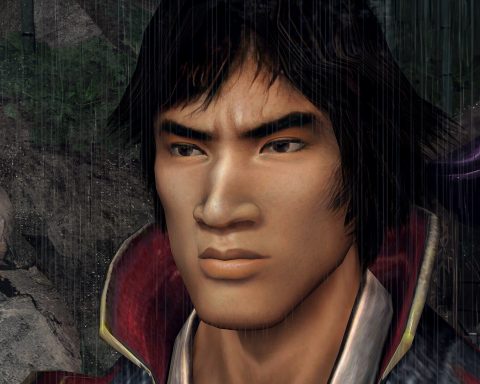.jpg) Review by Rob P.
Review by Rob P.
Battle Academy 2 is fantastic. That’s no surprise; the first Battle Academy was fantastic, and the sequel is more of the same. The latest title in the series comes with a fresh paint job, better tactical options and a brilliant skirmish mode but, not-so-deep-down, it’s still the same game that we fell in love with back in 2012.
As the subtitle suggests, Battle Academy 2 concentrates on the clash between Russian and German forces during World War II. Those events provide the backdrop for four lengthy single-player campaigns, but they’re there for atmosphere rather than verisimilitude. Instead, game objectives tend to be generic: take this village, protect that convoy, destroy those defences. It’s a good design decision as, freed from historical constraints, the developers have been able to channel their efforts into making maps that are great fun to play.
However, this rather carefree treatment of history doesn’t extend to the units under your command. There are tons of them, and they’re nicely modeled and well simulated, with a raft of hidden statistics that affect how they fight. This, more than anything, contributes to the character of the game. It’s not often that wargames let you pitch Russian saboteurs against waves of Tiger tanks, but this one does.
Cover and concealment play a fundamental role in gameplay. Battle Academy 2 proceeds in traditional, turn-based fashion but, whenever one of your units strays into an opponent’s line-of-sight, they get to take a potshot at you. This conveys a tremendous sense of pace and, almost unconsciously, forces you to use sound battlefield tactics. Enemy positions need to be scouted before you advance. Defences must be suppressed. Air support is useless until flak batteries are destroyed. Tanks are vulnerable without infantry. None of the campaign missions are particularly difficult, but most can be all-too-easily lost if these fundamental principles are forgotten.
Luckily, the interface is a breeze. Actions are performed by selecting a unit, pointing to a target location, and selecting a command from a context-sensitive menu. The range of available commands is slightly increased from the previous game, and now includes the option to drop smoke or perform an infantry dash. Another small but welcome innovation is damage modelling for mobile units. When you’re intent on placing a satchel charge under a T-34 tank, it makes all the difference to know that it can’t fire back at you.
The game’s presentation has evolved since the original Battle Academy. Gone are the cartoon visuals and the comic-sans font. Instead, pre-mission cutscenes are presented using hand-drawn paintings, and the in-game graphics use a subdued colour palette which is entirely appropriate for the setting. Unfortunately, the graphics still betray the game’s minimal budget, and some of the textures are less detailed than you’d expect for a PC release. The terrain types are also less varied than in the earlier title. Drab cities, muddy fields, snowy forest. It’s a good thing that the rest of the game shines so brightly.
As before, multiplayer is a key part of the experience. Games are hosted on Slitherine’s play-by-email server, and can be password protected to restrict them to friends. Most of the main campaign maps can be played co-operatively, but there are a handful of PvP maps for more antagonistic players. In addition, the game ships with a superb random skirmish generator which can be used for both single-and multiplayer games. This is one of the highlights of the package, and delivers quick, exciting battles against competent AI on highly customisable terrain. User-generated content is also starting to appear online, so this is a game that will keep on giving for a very long time.
So, why not five stars? Well, there are still a few optimisation issues. Because the interface has clearly been build for touch-screen devices, the context-sensitive icons can occupy quite a lot of screen space. This isn’t usually a problem, but there are times when the menu appears in a place where it can’t be clicked. Also, some of the city graphics can obscure unit positions, forcing you to rotate the camera to spot them. This happens fairly slowly, and it’s a shame that PC-friendly-spinny-whizzy mouse control couldn’t have been implemented instead. Other than that, it’s all good.
While it shares a significant amount of DNA with the first game, the clever maps, huge unit roster, and brilliant skirmish generator make Battle Academy 2 one of the most entertaining tactical-level wargames on the market today. It’s war without the snore. Don’t miss it.
– Rob P.
Gadget Guru


.jpg)






